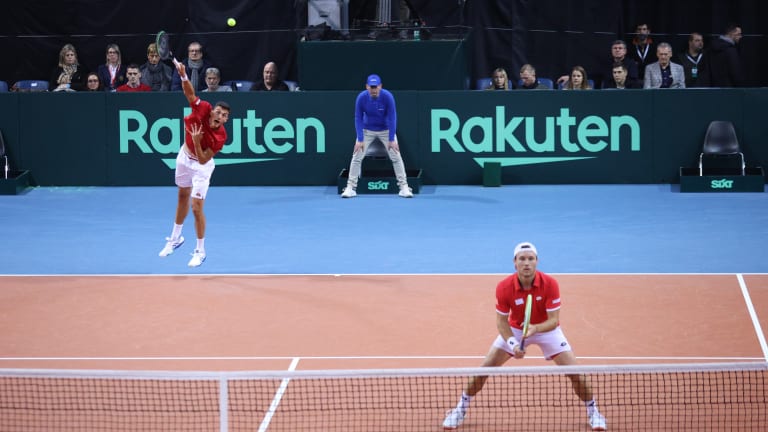Better for poaching
Not to belabor the obvious, but the closer you are to the center of the court, the better chance to intercept a return down the middle or crosscourt. This is especially true for when you set a designed poach and it’s your responsibility to cover those returns because your partner is covering the side you’re vacating. And if you employ a fake poach, it will have a greater impact on the receiver’s decision-making. Even if you don’t have a play on, you’re still in a better spot to improvise and take advantage of a weaker reply. Same goes for a lob return which now needs to be deeper to be impactful.
Improves timing and forward momentum
It may seem like a good idea to get right on top of the net, but often times it leaves a player flatfooted and slower to react. Starting a little further back from the net offers a split-second longer to cut off a return, as well as the ability to move across on more of an angle toward the net. This gets your bodyweight moving into the shot which promotes more forceful volleys than when you start too close to the net and have to cross on more of a straight line.
Limits opponents preferred returns
The best options for the returner are hitting down the middle, crosscourt or a lob over the net player. And if your partner has a weak second serve, blasting the return right between your eyes is another attractive choice. Positioning yourself in the center of the service box makes all of them more difficult.
Guarding the alley makes life easier for your opponents. Keep in mind is that if your partner is serving into the their body or down the T—which usually make up the majority of doubles serves—those are difficult returns to put in the alley. You’re protecting against a shot your opponents would rather not attempt, and giving them more room in areas they would.
A skeptic may say that moving back and more towards the center of the court will give opponents too much room to dip returns at the feet or drive in the alley. Let them try. They may hit a few beauties, but attempting them too often over the course of a match is generally not a winning strategy. Both rank as lower percentage shots with higher degrees of difficulty to execute effectively. If not done properly you’ll either draw an error or be in a great position to put the volley away.
Add it all up and you’ll be a major reason why your team holds serve.
